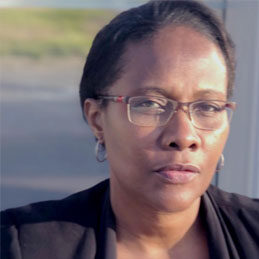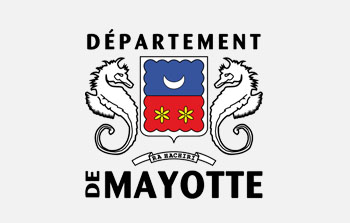As Director of Digital and Information Systems for the Mayotte Departmental Council, what are your main responsibilities?
I joined the Mayotte Departmental Council one year after decentralization in 2004 as Director of Information Systems (DSI). Since 2011, I have held the position of Director of Digital and Information Services at the DNSIMG of Mayotte.
In 2011, the island of Mayotte was elevated to the status of France's 101st department, then to an outermost region in 2013. In 10 years, this territory has undergone statutory and societal changes that many departments have taken more than 50 years to absorb.
And the DSI profession is no exception. My missions have evolved considerably over time with expanded responsibilities ranging from Information Systems to digital development. A job carried out in a complex and rudimentary technological context: Mayotte was only able to develop ADSL from 2012, the year of connection to its first underwater fiber optic cable.
At the head of a multidisciplinary department of 450 employees, my responsibilities today cover information systems, digital technology, and general resources.
More than a manager, I agilely align strategic missions with the Department's policy directions. I work towards the digital transformation of our administration and the development of digital technology across the country.
In new technologies, we are 10 years behind, and my challenge is to catch up by making our administration more modern and our region more connected.
What connectivity issues do you encounter in Mayotte?
The territory of Mayotte is located in the western part of the Indian Ocean between the African continent and Madagascar, at the northern entrance to the Mozambique Channel. Covering an area of nearly 375 square kilometers, Mayotte comprises two main islands, Petite-Terre and Grande-Terre.
The challenge of opening up its isolation is intrinsically linked to good submarine fiber optic connectivity with affordable prices and a very high-speed collection network to subscribers.
The arrival of the Lion2 cable in 2012 was a major step forward for digital development, enabling access to ADSL and the expansion of the mobile network, particularly 3G and 4G.
However, the development of professional offerings and the acceleration of very high-speed consumer offerings remain timid. Wi-Fi technology, which is widely available in the South, is struggling to develop. Today, only 29% of households have fixed-line internet access. Fixed-line 4G is in its infancy!
We have a significant imbalance in the local loop between the North and the South: the incumbent operator's optical infrastructure is mainly located in the North of the island, and the South is served by wireless and Wi-Fi networks.
The same problem also arises between the small island and the large island, which suffer from a lack of efficient infrastructure ensuring digital continuity, which is nevertheless essential given the growing data traffic between these two islands.
Can you remind us what infrastructure currently ensures connectivity in Mayotte?
Mayotte's broadband connection has been provided since 2012 by the 2,700 km long LION 2 (Lower Indian Ocean Network) submarine fiber optic cable, connecting Mauritius to Mombassa (Kenya) via Mayotte and Madagascar.
In 2019, a new FLY-LION 3 fiber optic cable, an extension of the LION2 cable, connected Moroni (Grande Comoros) and Mamoudzou (Mayotte) to strengthen connectivity in the Indian Ocean. This cable interconnects with the LION 2 and EASSy (Eastern African Submarine System) cables. The cable is primarily used for traffic security.
Mayotte has also been connected to the Comoros archipelago by the Avassa cable since the end of 2016, partly financed by STOI and used mainly for mobile communications.
The four operators Orange, SRR (SFR Group), Maoré Mobile, and Telco OI (under the Only brand) have authorization to use the 4G frequency. An average surface coverage rate of 76% across all operators is currently estimated, with a penetration rate of 103%. Currently, only SFR offers a fixed 4G service through the "Territorial Digital Cohesion" service.
Despite the strong presence of mobile operators and the initiatives taken regarding submarine cables, it is clear that the recovery hoped for since 2012 has not materialized. Indeed, of the 15,000 lines currently in existence, only 33% are offered with VDSL services. The CELAN offering is limited to the main town, and Wi-Fi coverage is not taking off.
What projects are currently being deployed across the country to improve Mayotte's coverage?
We are nearing the end of the CREM contract awarded in 2017 for a five-year period, with the objective of primarily strengthening the local loop through a fiber optic RIP. The departmental projects concern the deployment of:
What projects are currently being deployed across the country to improve Mayotte's coverage?
We are nearing the end of the five-year CREM contract awarded in 2017, with the priority objective of strengthening the local loop through a fiber optic RIP. The departmental projects involve the deployment of:
• a 30 km collection network opticalizing 5 NRAs in the south of the island for a North/South digital balance.
• 21 km of optical links connecting 7 sub-distribution frames eligible for an ADSL speed upgrade program with the possibility of VDSL2 services and services integrating triple play. This affects approximately 2,300 households.
• And finally, the connection of approximately fifty priority sites to fiber optics, particularly in the fields of healthcare, education, local authorities, and economic zones. Currently, 11 sites are already connected.
We plan to commercialize the network by the first quarter of 2021 at the latest.
From now on, the priority is very high-speed broadband to the subscriber. We are focusing our efforts on the FTTH deployment, considering the copper phase-out and the ambitions of the France THD Plan as real opportunities for FTTH deployment.
Furthermore, we remain open to the technology mix, which would be well suited to the Mayotte context, given the youthfulness of the population (65% under 25), but also given urban planning, a barrier to 100% FTTH coverage.
To achieve this, we are moving towards opticalization of high points to guarantee very high-speed solutions via the mobile network where needed.
How would you describe the support provided by the Tactis teams on your projects?
Beyond its major challenges, the digital opening up of Mayotte is first and foremost a matter of territorial continuity. At 10,000 kilometers from mainland France, this small overseas department is far from everything, and its connection to the rest of the world via an underwater fiber optic cable was simply inevitable. Tactis demonstrated an ability to understand the specificities of our region when it was commissioned to conduct a digital assessment of Mayotte.
I was particularly struck by its boldness when it recommended the Call for Expressions of Interest (CEI) for connecting Mayotte to a submarine fiber optic cable. This initiative was a real catalyst for the arrival of LION2.
This project management assistance (AMO) was fully committed to the development of digital technology in Mayotte, and through a co-construction approach, we established a true partnership for the development and success of the Mayotte Digital project.


